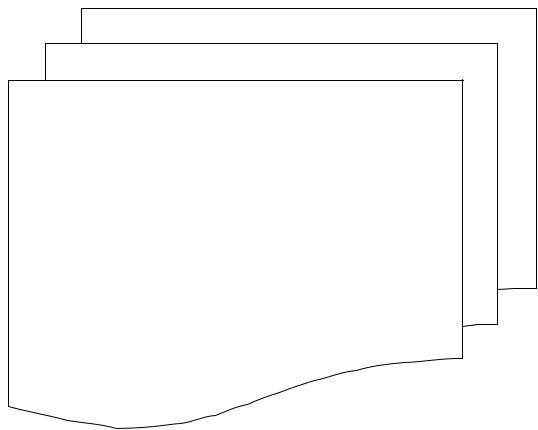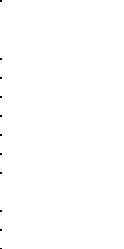
Английскй учебник
.pdf
MODULE 11
FORENSIC DOCUMENT EXAMINATION
UNIT 1. INTRODUCTION
The discipline is known by many names including forensic document examination, questioned document examination, handwriting examination, or sometimes handwriting analysis, although the latter term is not often used as it may be confused with graphology.
1. , (
.
301


3.% ! . ,
, .
1.I wonder if two people can write exactly alike.
2.I wonder who can differentiate genuine and non-genuine writing.
3.I wonder if writing is a complex act and a highly developed skill.
4.I wonder what results in the unique style of each individual writer.
5.I wonder what skilled writing uses.
6.I wonder if poor writers use only their fingers.
7.I wonder when writing becomes automatic.
4., ' !, -
.
1. index finger, 2. to extend the writing line, 3. writing instrument, 4. offers resistance, 5. in a rightward and upward direction, 6. writing area, 7. the left margin, 8. right-handed writers, 9. is covering the line of writing, 10. contraction and release, 11. strokes
The wrist is flexed to assist in the movement of the () " ). The wrist will bend to assist the writer in reaching the ( $ ). When the wrist can no longer reach, the arm slides forward toward the right margin (&$ ). The arm is pulled back to () to start the next line of writing. The paper may be adjusted as well to assist the writer in reaching the available writing surface. The fingers work together to produce the forms of writing. When one finger pushes the writing instrument another ( ), which controls the motion. The ( & ) flow together to push the pen away and pull it back again. The ()) turning leftward and downward require contraction of the muscles, and the upward and rightward strokes involve the release of the muscles. Thus, downward writing is better controlled.
( ) use their thumb to exert pressure on the writing instrument to push it horizontally ( ). The middle finger pushes the writing instrument leftward both diagonally and horizontally while the thumb and ( $ " ) pull the instrument down toward the baseline, which is the imaginary line to which the writing returns.
Because writer movement is from left to right, the right-handed writer has the advantage of being able to see the writing as it is being executed. The left-handed writer must adjust his or her hand to compensate for the fact that the hand ( ) as it is being executed. Many lefthanded writers hook their hand over the writing so they can see what they are writing.
5. % ! . % , ( , -
, $ , # -
. 1 2.
Model 1.
The document says that no two people write exactly alike.
Model 2.
The document said that no two people wrote exactly alike.
306

•No two people write exactly alike.
•Individual characteristics that are unique to a particular writer exist in every person's handwriting, distinguishing it from every other handwriting.
•The act of writing is a skill learned through repetition until it becomes a habit.
•A person's normal form of writing is based on mental images of learned letter designs.
•People stylize their writing from the method they were taught.
•People adopt writing styles by copying those they like.
•Many writing habits are subconscious and therefore cannot be changed by the writer.
•A person's handwriting changes over the course of his or her lifetime.
6..
TEXT
HANDWRITING IN FORENSICS
A person's handwriting has long been recognized as a form of human identification. Handwriting, like fingerprints, contains a combination of characteristics. One of the first things the forensic scientist looks for is the way the lines form the letters. He looks at strokes, pressure, slants, heights, loops, letter spacing, proportions, dotted "i's" and crossed "t's" etc. The writing strokes consist of lines and curves in various directions, forming individual letter shapes. Lines can be vertical, horizontal, or diagonal. Curves are loops, circles, or parts of circles. Letter designs are the most easily identifiable feature of handwriting. Forgers copy letter designs while disregarding other characteristics of the writing. Each letter has a distinguishing element that makes it unique. For example, the t has crossbar, the i and j have a dot, and the f is the only lower case cursive letter that spans all three zones of writing because it has both upper loop and a lower loop. The letter p can occupy both zones if the upstroke is added. Connecting strokes joint the letters in words. They are also called ligatures. Letters in a word may be connected or disconnected. Connectors can consist of arches, angles, or thread connections.
When analyzing writing style, the forensic scientist looks at the handwriting in general, much like you would look at a painting. Make mental notes of the most outstanding traits and try to get a general feeling of the writer. Then, determine the emotional energy of the writer. This is the most important factor of the personality of the writer. A forensic scientist also looks to see if people make ornaments such as circles, etc. The scientist also looks at spelling, punctuation, and grammar.
307


